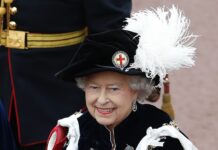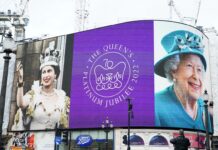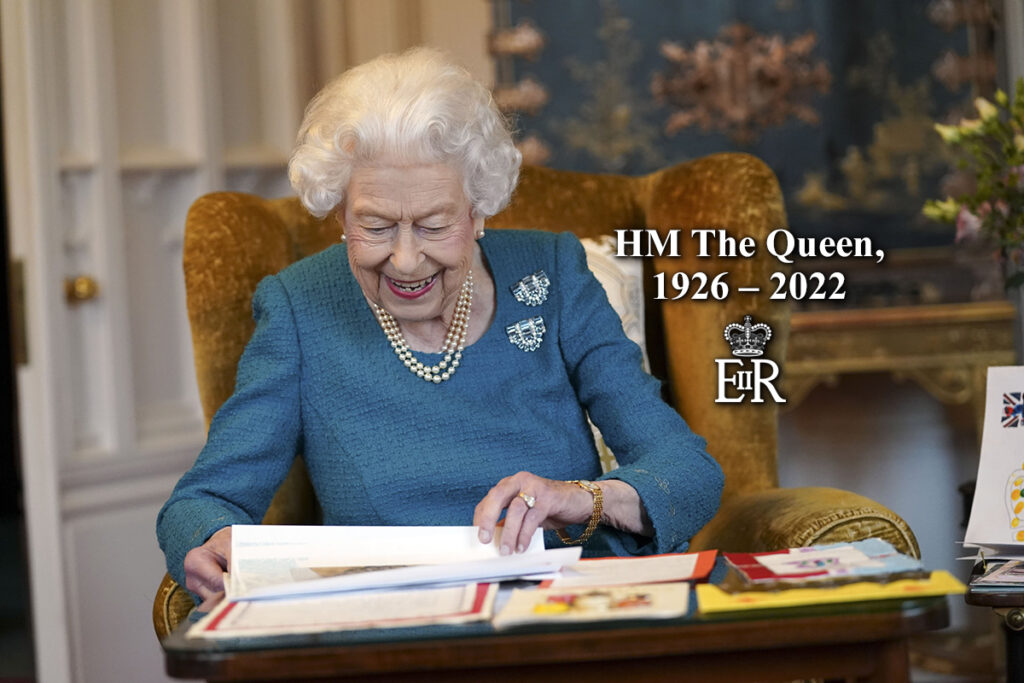
The shock at the news on Thursday afternoon was compounded by the fact that The Queen was only just seen on Tuesday 6th September carrying out one of her most important constitutional roles – welcoming her 15th Prime Minister, Liz Truss, at Balmoral.
Today as tributes flood in from around the world, hailing the Queen’s unwavering commitment to serving her country and the Commonwealth, places of worship have opened for prayers or special services for mourners.
A period of royal mourning will be observed by members of the Royal Family, royal household staff and representatives, together with troops committed to ceremonial duties – from now until seven days after the Queen’s funeral, the date of which will be confirmed in due course, Buckingham Palace said.
The constitutional change is immediate and immense. King Charles III has already taken on all the responsibilities of head of state, but at the same time will also be dealing with a very personal grief with the loss of his beloved mother.
The Queen’s legacy
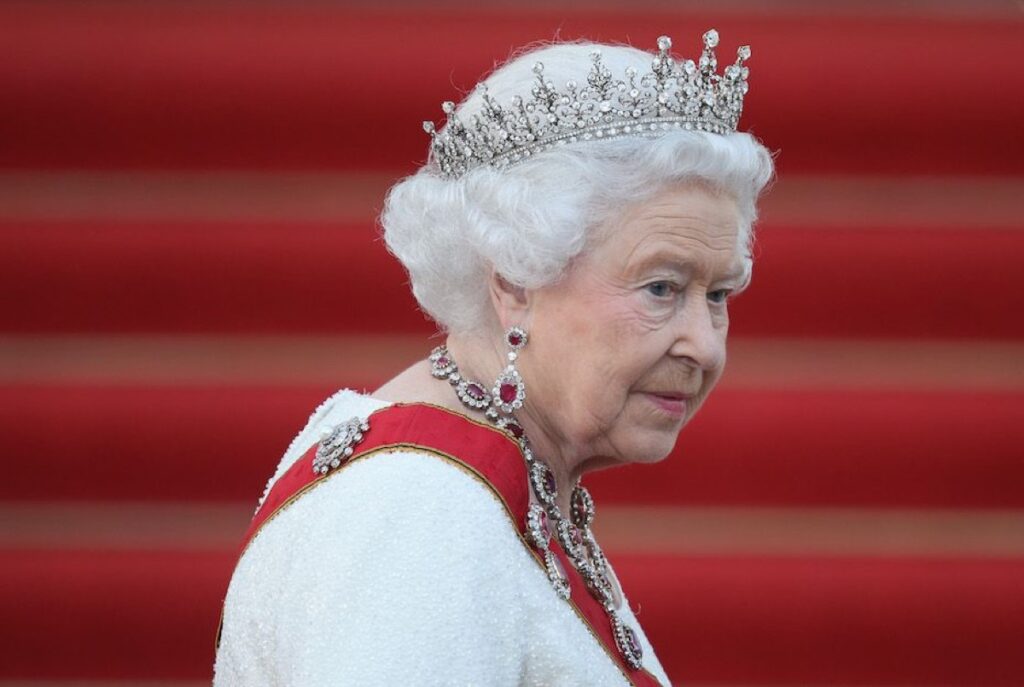
The long reign of Queen Elizabeth II was marked by her strong sense of duty and her determination to dedicate her life to her throne and to her people.
She became for many the one constant point in a rapidly changing world as British influence declined, society changed beyond recognition and the role of the monarchy itself came into question.
Her success in maintaining the monarchy through such turbulent times was even more remarkable given that, at the time of her birth, no-one could have foreseen that the throne would be her destiny.
Elizabeth Alexandra Mary Windsor was born on 21 April 1926, in a house just off Berkeley Square in London, the first child of Albert, Duke of York, second son of George V, and his duchess, the former Lady Elizabeth Bowes-Lyon.
Both Elizabeth and her sister, Margaret Rose, who was born in 1930, were educated at home and brought up in a loving family atmosphere. Elizabeth was extremely close to both her father and her grandfather, George V.
At the age of six, Elizabeth told her riding instructor that she wanted to become a “country lady with lots of horses and dogs”.
She was said to have shown a remarkable sense of responsibility from a very early age and proved adept at languages and made a detailed study of constitutional history.
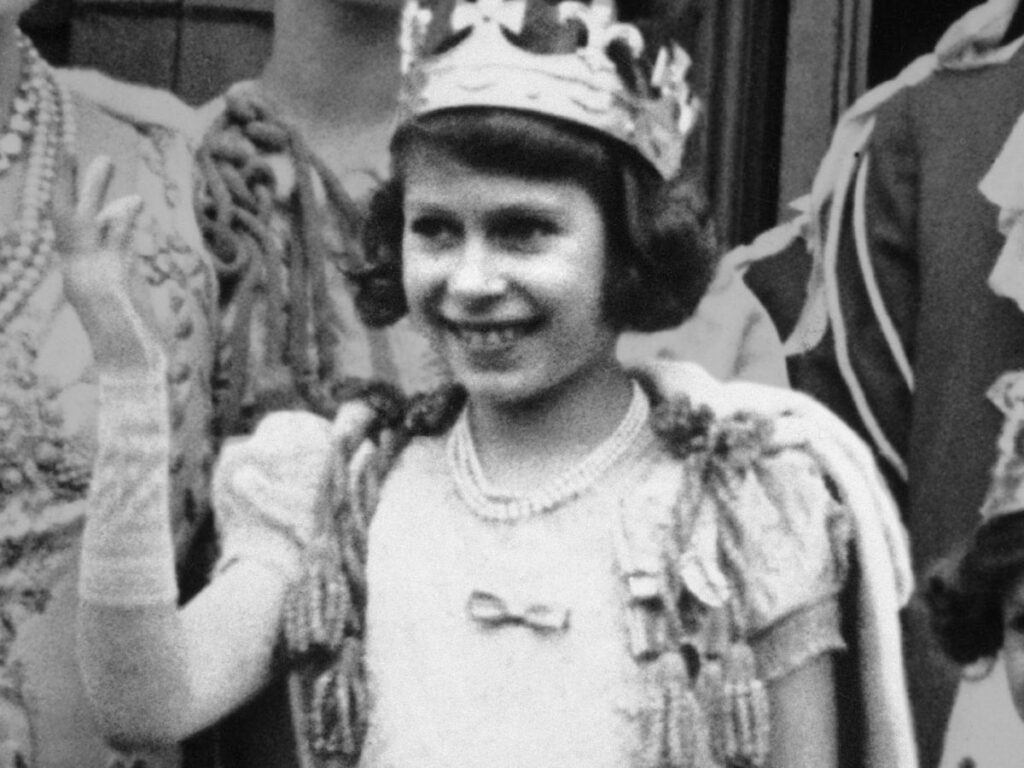
A special Girl Guides company, the 1st Buckingham Palace, was formed so that she could socialise with girls of her own age.
On the death of George V in 1936, his eldest son became Edward VIII. However, his choice of wife, the twice-divorced American Wallis Simpson, was deemed to be unacceptable on political and religious grounds. At the end of the year he abdicated.
Elizabeth’s father – the Duke of York became King George VI. His Coronation gave Elizabeth a foretaste of what lay in store for her and she later wrote that she had found the service “very, very wonderful”.
Against a background of increasing tension in Europe, the new King set out to restore public faith in the monarchy. His example was not lost on their elder daughter.
In 1939, the 13-year-old princess accompanied the King and Queen to the Royal Naval College at Dartmouth.
Together with her sister Margaret, she was escorted by one of the cadets, her third cousin, Prince Philip of Greece.
It was not the first time they had met, but it was the first time she took an interest in him.
Prince Philip called on his royal relatives when on leave from the navy, and by 1944, when she was 18, Elizabeth was clearly in love with him. She kept his picture in her room and they exchanged letters.
The young princess briefly joined the Auxiliary Territorial Service (ATS) towards the end of the war, learning to drive and service a lorry. On VE Day, she joined the Royal Family at Buckingham Palace as thousands gathered in The Mall to celebrate the end of the war in Europe.
“We asked my parents if we could go out and see for ourselves,” she later recalled. “I remember we were terrified of being recognised. I remember lines of unknown people linking arms and walking down Whitehall, all of us just swept along on a tide of happiness and relief.”
After the war, her desire to marry Prince Philip faced a number of obstacles.
The King was reluctant to lose a daughter on whom he doted, and Philip had to overcome the prejudice of an establishment that could not accept his foreign ancestry.
But the wishes of the couple prevailed and on 20 November 1947 the couple married in Westminster Abbey.
The Duke of Edinburgh, as Philip had become, remained a serving naval officer. For a short time, a posting to Malta meant the young couple could enjoy a relatively normal life.
Their first child, Charles, was born in 1948, followed by a sister, Anne, who arrived in 1950.
But the King, having suffered considerable stress during the war years, was terminally ill with lung cancer, brought about by a lifetime of heavy smoking.
In January 1952, Elizabeth, then 25, set off with Philip for an overseas tour. The King, against medical advice, went to the airport to see the couple off. It was to be the last time Elizabeth would see her father.
Elizabeth heard of the death of the King while staying at a game lodge in Kenya and the new Queen immediately returned to London.
“In a way, I didn’t have an apprenticeship,” she later recalled. “My father died much too young, so it was all a very sudden kind of taking on and making the best job you can.”
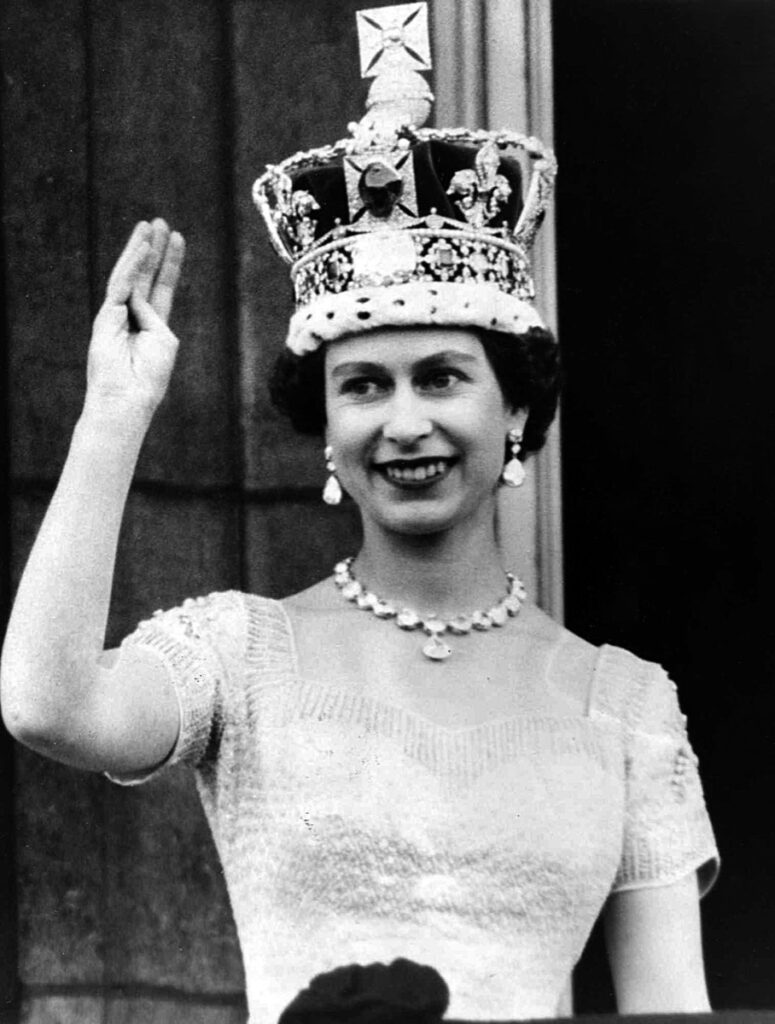
Her Coronation in June 1953 was televised, despite the opposition of Prime Minister Winston Churchill, and millions gathered around TV sets, many of them for the first time, to watch as Queen Elizabeth II made her oath.
With Britain still enduring post-war austerity, commentators saw the Coronation as the dawn of a new Elizabethan age.
Her Coronation was the first to be broadcast live on British TV


